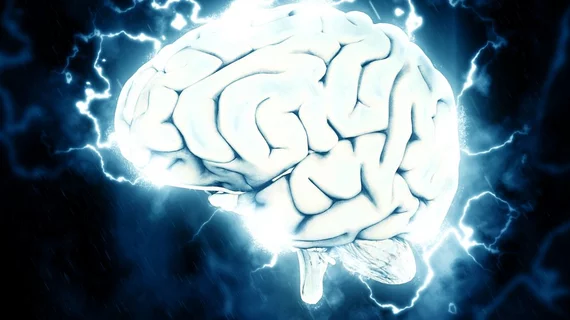Intraarticular gadolinium administration for MR arthrography leaves no detectable gadolinium deposition in the brain, according to research published in the American Journal of Roentgenology.
“Although significant investigation has been done into the deposition of gadolinium in the brains of patients receiving IV gadolinium, there is little research concerning nonintravenous uses of gadolinium, specifically in conjunction with musculoskeletal MR arthrography,” wrote lead author Lauren M. Ladd, MD, of the Indiana University School of Medicine in Indianapolis, and colleagues. “Although small in volume, intraarticular administration is an off-label use of gadolinium, necessitating careful scrutiny for patient safety.”
The researchers assessed a cohort of 31 patients with no history of gadolinium exposure who underwent MR arthrography from 2006 to 2016, followed by unenhanced brain MRI. They were then compared to 34 control subjects who had a history of MRI but no gadolinium exposure.
“Our study is the only one to our knowledge to assess intracranial gadolinium deposition after intraarticular GBCA administration,” Ladd and colleagues wrote.
The arthrograms were obtained under fluoroscopic guidance to confirm intraarticular administration of the contrast mixture. The solution was a combination of iopamidol, anesthetic or saline, epinephrine and gadolinium-based contrast agents (GBCAs). The researchers utilized three different GBCAs. The volume of the contrast agent was dependent on the joint studied, amount of contrast agent injected and volume of the contrast material in the solution mixture.
The researchers placed ROIs bilaterally on various parts of the brain—bilateral dentate nuclei (DN), bilateral globus pallidi (GP), bilateral thalami, bilateral middle cerebral peduncles (MCP) and the central pons (CP) on T1-weighted sequences. Left and right ROIs were collected and averaged.
Ladd and colleagues noted there was no detectable difference noted between the study and control subjects in gadolinium deposition within the brain during intraarticular gadolinium administration for MR arthrography.
“Our results delineate a lack of intracranial gadolinium deposition and, therefore, support the continued safe off-label use of GBCAs for MR arthrography,” the authors concluded.

